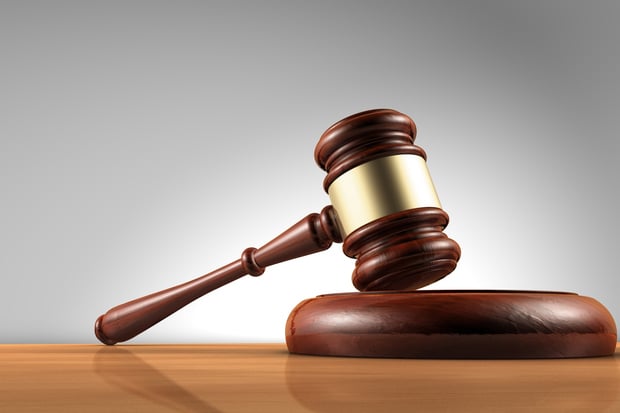After three years of litigation characterized as “contentious” by federal Judge Edward M. Chen, the parties announced a settlement. Uber agreed to adjust some business practices and pay out $84 million, plus an additional $16 million if the company has a successful initial public offering in the near future. It sounds like a lot of money. But, last month, Judge Chen rejected the proposed settlement as “not fair, adequate, and reasonable.”
The judge’s reasons for rejecting a seemingly generous settlement offer reveal much about the “gig economy” that Uber dominates alongside its arch-rival Lyft. Recent news stories report that they will soon be fighting for market share with Waze Carpool, a project of Google’s parent company Alphabet. If gig economy drivers are independent contractors, they aren’t entitled to various job protections that employees can take for granted. The distinction also makes a huge difference to the potential legal liability of the company.
The distinction might even be described as a continuing unstated theme of this column. One recent column described how an employer can be held liable for an employee’s crimes and car crashes. Another talked about the obligation of farms and ranches with three or more employees to purchase workers’ compensation insurance. Businesses can avoid all such risk and expense by hiring only independent contractors. Of particular concern in the Uber litigation was a California law requiring companies to reimburse their employees for the business use of their private vehicles. Independent contractors aren’t entitled to gas and mileage.
In these and many other ways, the law holds out generous incentives for companies to hire workers as independent contractors. Uber, Lyft and other gig economy businesses are built around taking advantage of those incentives.
But what is the difference between an employee and an independent contractor? In 1909, New Mexico’s territorial Supreme Court summed it up: “The chief consideration which determines one to be an independent contractor is the fact that the employer has no right of control as to the mode of doing the work contracted for.” That definition, already venerable in 1909, derived from the ancient English law of master and servant. It remains a correct statement of New Mexico law to this day. The current jury instruction approved by our modern Supreme Court is a close paraphrase.
When you hire a plumber or roofer to maintain your house, or a mechanic to fix your car, you’re hiring an independent contractor. You define the goal, but rely on the contractor to figure out how to achieve it. That’s much different from a company that adds workers to the payroll and then teaches them how to do their jobs. The new hires wouldn’t like to hear it, but they belong in the same legal category as English servants of the 18th century.
In short, the class action lawsuit required Judge Chen to evaluate app-based ride-sharing technology using a form of legal analysis familiar to Sir William Blackstone. As the judge recognized, the proper classification of Uber drivers is especially difficult because Uber gets as close to the line as it can. For example, drivers theoretically have the right to refuse a fare, but drivers with a low passenger acceptance rate can be “deactivated” by the company. The ancient legal test assumes that one or the other party controls “the mode of doing the work.” But, in the gig economy, control is shared.
By agreeing to the $84 million proposed settlement, Uber sought to protect itself from a potentially ruinous finding that its drivers are all employees. The terms of the proposed settlement would have declared that drivers are independent contractors, while slightly loosening Uber’s control over their driving activities.
But three features of the proposed settlement struck Judge Chen as dubious. First, the plaintiffs’ attorney was entitled to fees and expenses to the tune of $21 million or more. By contrast, while the very busiest drivers would receive nearly $2,000, “the vast majority of class members are slated to receive less than $100 each,” according to the judge. The plaintiffs’ attorney offered to reduce her fee request by $10 million, a remarkably generous offer that nonetheless underscores how valuable the settlement was to her personally.
Second, the proposed settlement would have encompassed not just the class action lawsuit, but also “at least fifteen other lawsuits currently pending in federal and California state courts, effectively terminating those suits.” The settlement could do that because the class of plaintiffs – all California Uber drivers – included the plaintiffs in those 15 other lawsuits, too. The proposed settlement agreement valued the 15 other lawsuits at zero. Numerous regulatory proceedings, including one before the National Labor Relations Board, would also be concluded at no cost to Uber. If corporate lawyers gave out annual awards for audacity, Uber’s legal team would be odds-on favorites this year.
Third, the settlement would have included claims under California’s Private Attorney General Act. That act allows private parties to sue on behalf of the state of California, with three-quarters of any award going into the state treasury. Judge Chen invited California’s Labor and Workforce Development Agency to advise him with regard to that claim. The agency concluded that, if Uber drivers are actually employees, “the statutory penalty against Uber would exceed $1 billion.” The proposed settlement valued that claim at $1 million, a discount rate of 99.9 percent.
Judge Chen’s reasons for rejecting the proposed settlement seem solid. My guess is that the parties will soon be back with a new, less sweeping settlement. But, in the absence of effective regulation from state legislatures, Congress or the executive branch, courts will be stuck with using the ancient law of master and servant to classify drivers and other gig workers. That case-by-case sorting leaves unanswered the real public policy question: Are such workers entitled to any employment protections at all and, if so, which ones?
Editor: The views, opinions and positions expressed within articles by the authors and those providing comments on these blogs are theirs alone, and do not necessarily reflect the views, opinions or positions of ClassActionReview.com. Please review our TOS for additional details. Please visit the source link below to read the entire article.
Joel Jacobsen is an author and has recently retired from a 29-year legal career.
Source: www.abqjournal.com





Be the first to comment on "‘Gig Economy’ Rests on Old English Legal Plank"